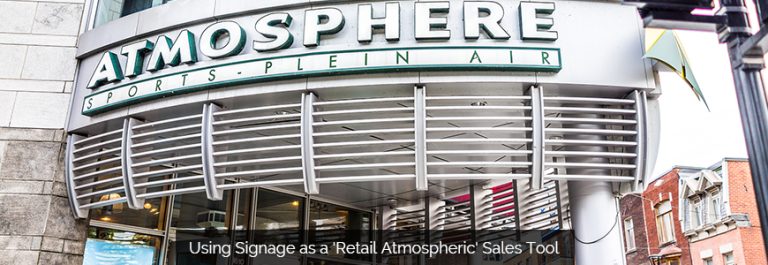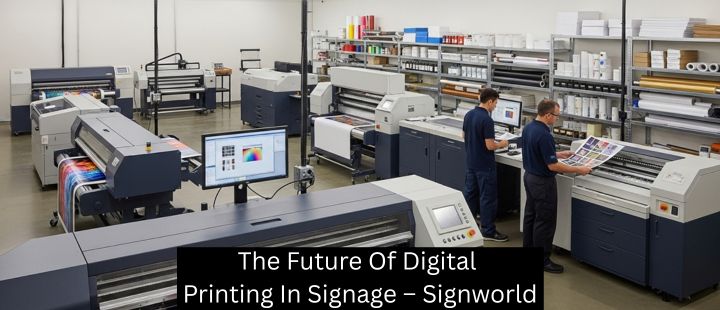According to The Journal of Business Research, store environments are becoming an increasingly important factor in competitive retail positioning (Sharma & Stafford, 2000).
Without question, most successful businesses have unique environments. For example, consider the open-concept, sleek, and modern atmosphere at the Apple store, and how that contributes to the brand’s chic, high-tech image.
A business can change its store environment by changing “atmospheric cues,” which consist of ambience, design, and social factors (Sharma & Stafford, 2000, p. 183). And while we cannot control the social factors, it is possible to engineer the ambience and design of your store using different types of signage, graphics, and displays in order to increase the persuasive effect of salespeople.
Indeed, marketers around the country are now recognizing the importance of manipulating store environments to influence consumers’ decisions to visit the store, as well as their inferences about merchandise, service quality, and enjoyment at the store (Sharma & Stafford, 2000, p. 183).
Accordingly, today’s post shares a few tips for engineering the perfect retail atmospherics using different types of signs. Read on to learn strategies marketers use for increasing sales, salesperson performance, conversion rates, and branding with a variety of custom signs, each of which can be provided by a member of the Signworld business alliance near you.
What is your indoor signage saying about your store?
Before you start manipulating your signage and layout, you need to know what messages your current store is sending.
Sharma & Stafford (2000)’s report in the Journal of Business Research identifies two basic types of store ambience: “prestige ambience” and “discount store ambience.”
Discount stores are described as having “packed aisles, loud signage, and loud music” (p. 184). These types of stores attract a particular types of clientele, usually one who is seeking the best deals rather than products of the highest quality.
Store ambience can affect customer perceptions of salespeople (Sharma & Stafford, 2000, p. 184). Prestige ambience is associated with more credible and knowledgeable service providers, whereas most people have lower expectations for staff working at stores with “discount ambience.”
Obviously, if you’re running a high-end boutique or tech shop, “loud signage,” characterized by aggressive font, bright colors in high contrast, and large, invasive displays, is not the way to go.
“Prestige ambience” is all about space and softness, characterized by “open, plush surroundings and soft music” (p. 184). This is what you see at the Apple store, as well as any high-end fashion retail outlet. In these environments, subtle point-of-sale signage, muted promotional material, and simple, intuitive wayfinding signage will perform best. Moreover, signs should encourage visitors to seek staff assistance, since these prestige shops prioritize whether that means implicitly saying as much, or directing shoppers to fitting/cash areas.
How do different types of signs affect store atmospherics?
For “prestige atmospherics,” try any of the following:
- Since they do not clutter up the floor space, and because they often look like pieces of art themselves, wall graphics, murals, and wallpapers fit well into the “prestige ambience.” Floor graphics work well for the same reason – see IKEA for a real-world example.
- Dynamic digital signs contribute to modern, sleek, and stylish atmospherics, and work particularly well for businesses in the technology sector.
- Banners also work well, adding a touch of class without cluttering up your floor space.
For “discount atmospherics,” try for cost-effective options like:
- A-frames, which can be used to direct the flow of bargain-hunters and announce special offers.
- Point-of-sale signs, which convert lengthy check-out lines into high-performance sales opportunities.
- Traditional hanging signs, which bargain shoppers are already conditioned to watch out for, are a classic option for discount shops.
Book your custom sign design session
Contact a member of the Signworld business alliance today at https://www.signworld.org to discuss more options for engineering your store’s atmospherics.
References
Sharma, A., & Stafford, T. F. (2000). The Effect of Retail Atmospherics on Customers’ Perceptions of Salespeople and Customer Persuasion:: An Empirical Investigation. Journal of Business Research, 49(2), 183-191.




